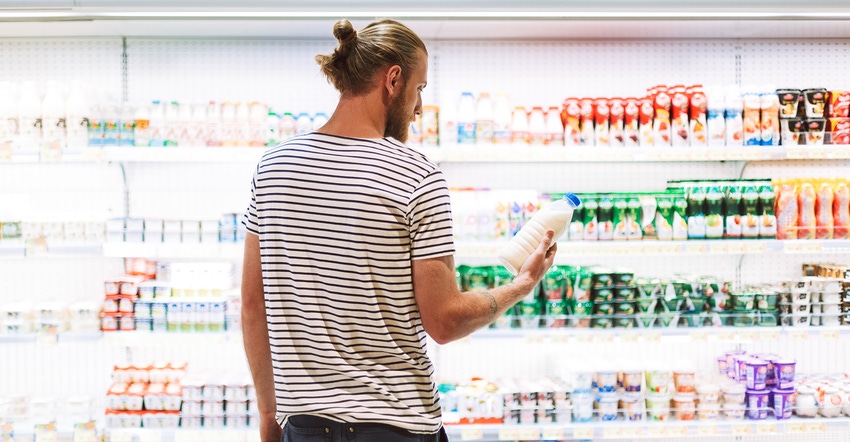Brands are fortifying food and beverages with high-quality, resilient, science-backed probiotic strains.

The probiotics category continues to evolve as consumer interest in the microbiome and overall gut health fuels demand. As a result, researchers are discovering new health benefits of probiotic strains, while manufacturers improve technologies and techniques to drive solutions. Developments such as spore-forming probiotics and microencapsulation have made probiotics more resistant to processing, inspiring a host of innovative delivery formats, especially in foods and beverages.
However, not all strains are created equal. Probiotic strains each possess distinct characteristics. Each one is unique, and these properties may influence safety, efficacy and their suitability for certain applications.
For beverages, the form of the probiotic strain is dependent on the finished product type and distribution channel. For example, live and active cultures are generally used in refrigerated products such as drinkable yogurt, kefir and kombucha, while the more robust spore form of microorganisms are often used in non-refrigerated beverages, noted Joe Farinella, vice president of research and development, Imbibe.
“In terms of specific strains, yogurt drinks are made by adding lactic-acid producing bacteria, such as lactobacillus bulgaricus and streptococcus thermophillus, into a dairy base and fermented at elevated at thermophillic temperatures,” he said. “These strains do not survive the digestive tract, so yogurt drinks can be fortified with additional, hardier organisms like bifidobacterium and other forms of lactobacillus due deliver increased probiotic effect.”
Kefir drinks contain similar bacteria strains to yogurt; however, they also contain various yeast strains (e.g. candida humilis, saccaromyces unisporous), Farinella cautioned. Kombuchas contain a more elaborate cocktails including bacteria (e.g., acetobacteria, gluconacetobacter) and yeasts (e.g., saccaromyces, zygosaccharomyces)
“Engineered” probiotic drinks, like Kevita probiotic soda contain the spore form of bacteria, such as bacillus coagulans. “The spore form is much more robust and not only can survive higher temperature exposure from the production process, but also survive in acidic environments and are more likely to reach the intestine,” Farinella added.
Formulating foods and beverages with probiotics requires a fundamental understanding of foods and beverage formulation, and how manufacturing impacts probiotics’ physiological effects, noted Kantha Shelke, principal, Corvus Blue LLC.
Food and beverage products must meet several criteria to ensure probiotics meet their definition, according to the World Health Organization (WHO): “probiotics are microorganisms that need to be alive when administered and need to be administered in amounts adequate to have a health benefit.” Shelke said the definition does not stipulate what an adequate amount is. However, regulators in, for example, Canada and Italy require a minimum dose of 109 colony forming units (CFU).4
“Meeting these criteria is particularly challenging in food and beverage formats because the associated processes can be harsh, and the ingredients can challenge viability, yield and often even the selection of the culture media ingredients (and therefore, the type of microorganisms) because of allergen issues for optimized dosage and functionality, even at the end of shelf life,” Shelke said.
Farinella said ensuring an effective dose of probiotics from production through purchase and consumption is the biggest challenge to formulating probiotic beverages. Live, active cultures used in refrigerated products are sensitive to the high temperatures needed during the manufacturing process, while the spore form of bacteria tends to be stable in high temperature conditions. In both cases, he said, it is important to overdose the product with probiotics during the batching step in order to ensure delivery of the desired amount post-production.
Probiotics chalk up big win
Keenan Smith, founder and CEO of Goodwolf, took home the top prize at the 2019 Natural Products Expo East Pitch Slam. Goodwolf makes water kefir, a raw, living probiotic drink from traditionally fermented kefir crystals. Capitalizing on two fast-moving categories—fermentation and sparkling water—Smith, a former natural foods sales broker, decided to put his energy and expertise into his own company. Click here to watch him explain the origins of kefir crystals, as well as the legend of the two wolves and the evolution of the Goodwolf brand.
Learn more about formulation considerations for creating probiotic-rich foods and beverages by reading the full article in INSIDER’s Probiotic digital magazine.
About the Author(s)
You May Also Like






.png?width=800&auto=webp&quality=80&disable=upscale)